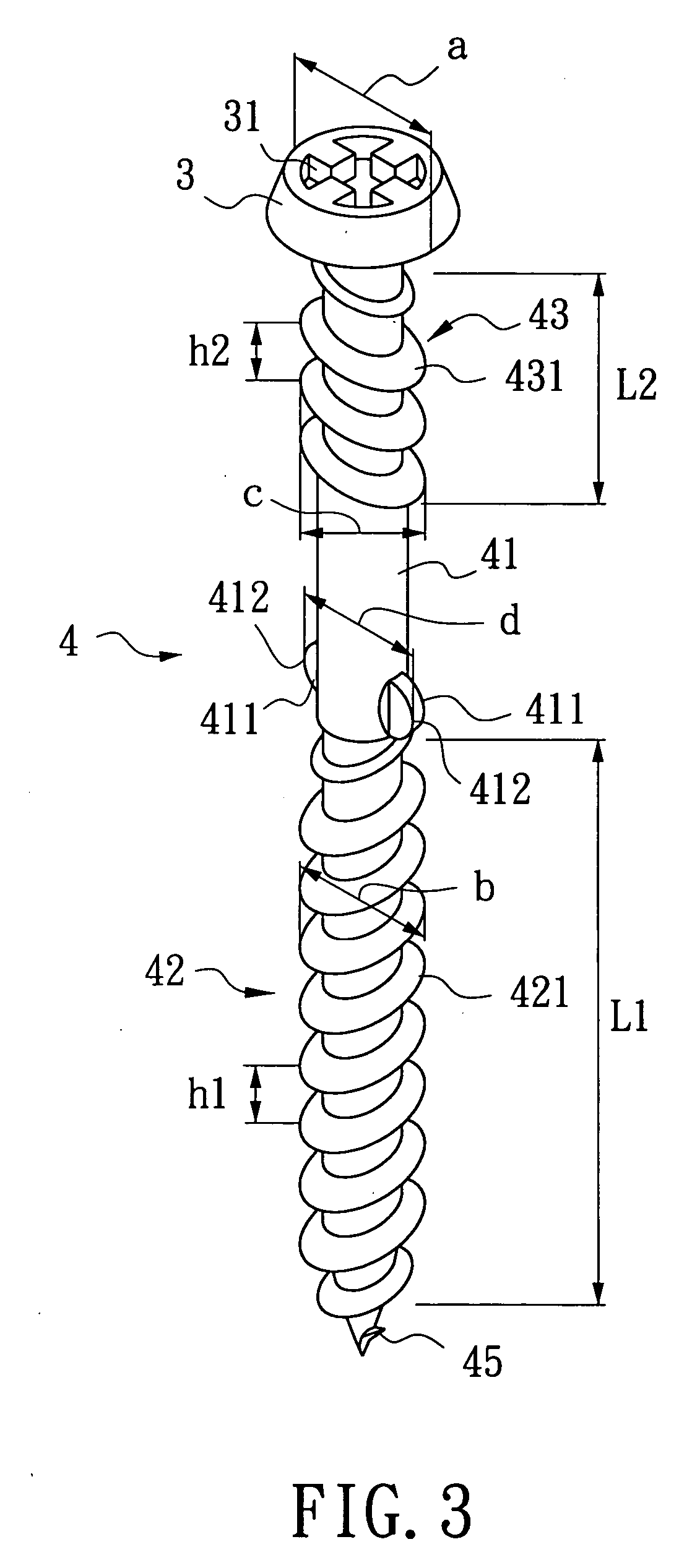Screw for composite board
a composite board and screw technology, applied in the direction of screws, threaded fasteners, fastening means, etc., can solve the problems of uneven raised bumps on the board surface, affecting the finished appearance and structural safety of the composite board, and limited space, so as to achieve a safe structure and a pleasing finished appearance
- Summary
- Abstract
- Description
- Claims
- Application Information
AI Technical Summary
Benefits of technology
Problems solved by technology
Method used
Image
Examples
Embodiment Construction
[0017] As shown in FIG. 3, the preferred embodiment of a screw according to the present invention includes a head 3, and a shank 4 connected to the head 3.
[0018] The head 3 has a head diameter (a), and a bit-receiving recess 31 that can be of any shape, such as the standard Phillips, Robertson, Torx, and Hex, or the shape as illustrated in FIG. 3 for this preferred embodiment, etc. However, the actual shape of the bit-receiving recess 31 is not a feature of this invention, so it should not limit the scope of this invention.
[0019] The shank 4 includes a lower threaded section 42, an upper threaded section 43 that is disposed adjacent to the head 3, an unthreaded section 41 that is disposed between the lower threaded section 42 and the upper threaded section 43, and a tip 45 that tapers from the lower threaded section 42. The lower threaded section 42 has a first length (L1), and is formed with a first thread 421 having a first thread diameter (b) smaller than the head diameter (a)....
PUM
 Login to View More
Login to View More Abstract
Description
Claims
Application Information
 Login to View More
Login to View More - R&D
- Intellectual Property
- Life Sciences
- Materials
- Tech Scout
- Unparalleled Data Quality
- Higher Quality Content
- 60% Fewer Hallucinations
Browse by: Latest US Patents, China's latest patents, Technical Efficacy Thesaurus, Application Domain, Technology Topic, Popular Technical Reports.
© 2025 PatSnap. All rights reserved.Legal|Privacy policy|Modern Slavery Act Transparency Statement|Sitemap|About US| Contact US: help@patsnap.com



